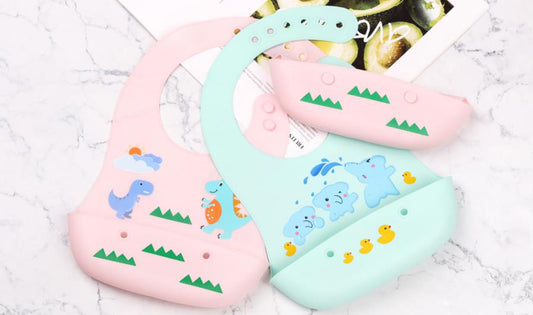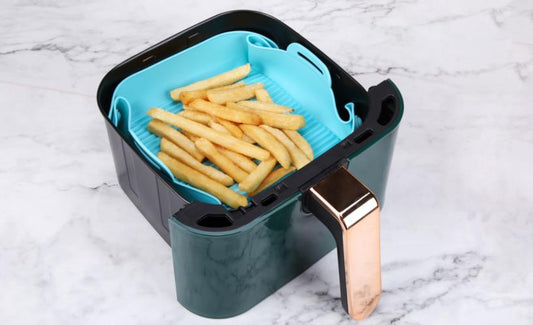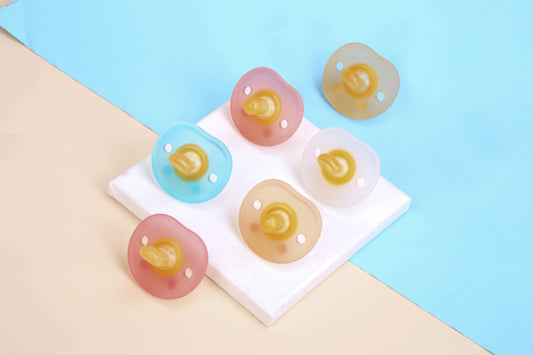Catalog
- When was silicone invented
- Are silicone pacifiers safe
- Silicone vs rubber pacifier
- How to clean silicone pacifiers
When was silicone invented

Silicone is a polymer material with excellent physical and chemical properties that is widely used in medical, kitchen, electronics, construction, automotive, aerospace and other fields. The history of silicone can be traced back to the early 20th century and the following are the major milestones in the history of silicone development:
- In 1919, Walter A. Patrick, a professor of chemistry at Johns Hopkins University, invented silica gel, which was used as an absorbent in gas masks during World War I.
- In the 1940s, silicone began to be used in the electronics industry for the manufacture of electronic components and bonding materials.
- In the 1950s, silicone began to be used in the medical field, for the manufacture of artificial organs and medical devices.
- In the 1960s, silicone began to be used in the construction field for waterproofing and sealing materials.
- In the 1970s, silicone began to be used in automotive and aerospace applications to make tires, seals and insulation.
- In the 1980s, silicone began to be used in food and cosmetic applications, for the manufacture of food packaging and cosmetic containers.
- From the 1990s to the present, the application fields of silicone have been expanding and new silicone products have emerged, such as silicone bracelets, silicone cell phone cases, silicone shoe insoles, etc.
At the beginning of the 20th century, silica gel was prepared in a very primitive way, mainly by pyrolysis of silicates. Although this method is simple, the quality of silica gel prepared is not stable and the cost is high. With the development of chemical industry, people began to try to use silicone compounds to prepare silica gel, this method not only to prepare the quality of silica gel is more stable, and the cost is also cheaper.

In the 1950s, the application of silica gel began to gradually expand, in the field of electronics, silica gel is widely used in the manufacture of semiconductors, can be used to prepare the mask of semiconductor materials, sealing materials, etc.. In the medical field, silica gel is used to prepare human organs, medical tape, etc. In the construction field, silica gel is used to prepare waterproof materials, sealing materials, etc. In the field of automobile and aerospace, silica gel is used to make sealing materials and sound insulation materials, etc.

Nowadays, with the continuous progress of technology, the method of preparing silica gel has been improved and the preparation method has been very mature. Silicone is also widely used in the food field. Such as baby silicone tableware, baby pacifiers, bottles, etc.
Are silicone pacifiers safe
Because the pacifier is in direct contact with the baby's mouth, it needs to be chosen carefully. If you choose a pacifier that is not safe, it will affect your baby's health.
Silicone pacifier is a safe pacifier, it uses the characteristics of silicone colorless, tasteless, non-toxic, high temperature resistant, low temperature resistant, etc. It is made of food-grade silicone, does not contain BPA, non-toxic and harmless. It is not easy to make it deformed by any disinfection method, silicone pacifiers are more heat resistant than normal bottles, and no harmful ingredients will seep out during prolonged disinfection, and no odor will be produced.
Silicone vs rubber pacifier
Silicone pacifiers are made from food-grade silicone, and rubber pacifiers, also called latex pacifiers, are made from natural rubber latex.
Silicone pacifiers are made of high quality silicone. They are resistant to temperature changes, can be boiled, have a smooth surface, are transparent, and are odorless, all of which are important characteristics of silicone pacifiers. However, there are a number of safety issues to be aware of when using silicone pacifiers. For example, silicone is not as elastic as rubber, so once the surface is broken, it can easily tear. Silicone is fragile, so if you use it often, you should check the surface carefully for damage. If there are any signs of aging, such as dark lines, scratches, teeth marks or small holes, the silicone pacifier should be replaced immediately.

Rubber pacifiers are made of natural rubber. Natural rubber is a very elastic and soft material. These characteristics are important for the manufacture of safe pacifiers and have the following features: natural rubber is very elastic, easy to pull at will, and harmless to the environment. Rubber pacifiers can have a rubbery taste, have a shorter life span, and are more prone to aging. It needs to be stored carefully, avoiding direct sunlight and in a cool, dry place. Rubber pacifiers are usually yellow, and poor quality rubber can produce toxins at high temperatures.
The biggest difference between silicone and rubber is that silicone has no odor, is not easily aged and has a longer life span. Silicone pacifiers are more resistant to high and low temperatures than rubber pacifiers and can be repeatedly sterilized in boiling water several times, while latex pacifiers need to be kept out of direct sunlight and stored in a cool, dry place.
How to clean silicone pacifiers
Baby silicone pacifiers should be cleaned in time after use, because they can leave milk stains and food residues, which can easily breed bacteria if not cleaned in time. If your baby eats a pacifier that has not been cleaned, it will easily cause gastrointestinal infections.
After using a silicone soother for your baby, use a professional bottle brush and clean it thoroughly from the outside in. Since the outside of the pacifier is usually in direct contact with the inside of the baby's mouth, clean the outside of the pacifier with clean running water as a priority. After cleaning the outside, you can turn the silicone teat inside out to clean the milk stains and food residue left inside the teat. After that, remember to use a bottle brush to carefully brush the area where the nipple meets the bottle to prevent food residue and milk residue from breeding bacteria.

After cleaning the silicone pacifier, you can place it in a ventilated area to dry fully. You can also steam or boil the pacifier in boiling water to sterilize it.
Silicone pacifiers are recommended not to be used for a long time to avoid aging of the silicone, and can be replaced at intervals of 1-3 months.



